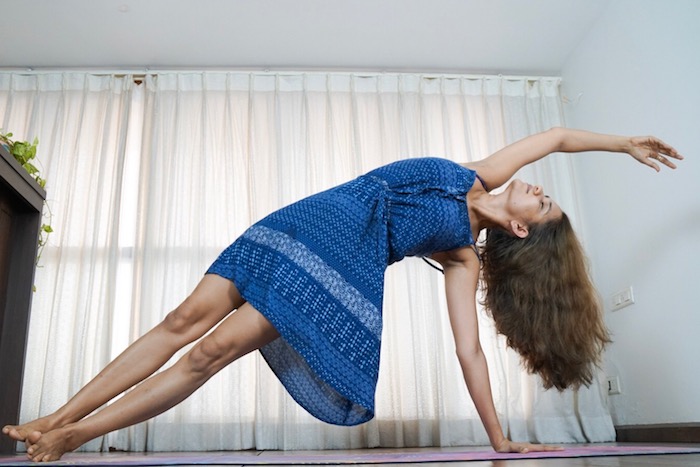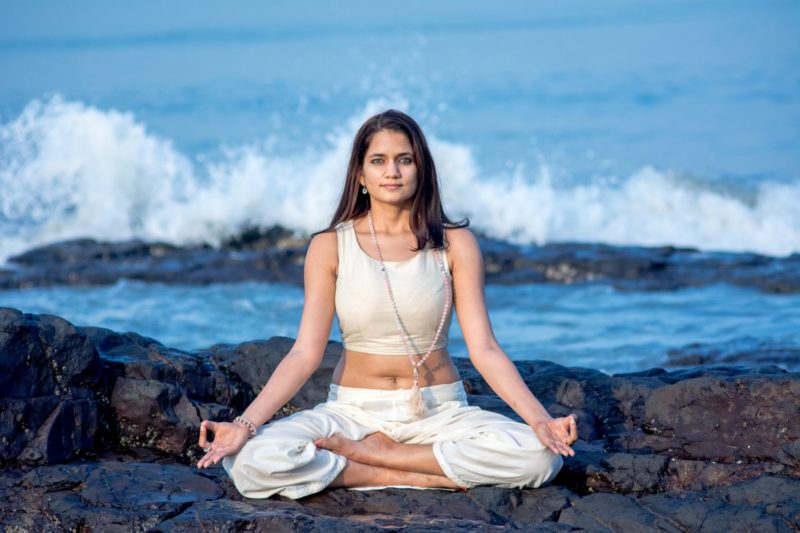It is International Yoga Day – a special and proud day for all Indians that celebrates a timeless practice. While our ancestors left us with this priceless wisdom, despite its growing popularity we are unfortunately gradually losing touch with its essence. Not just us, globally Yoga has taken on a skewed interpretation limited to fancy postures and bendy bodies. There’s naked yoga, beer yoga, goat yoga and hot yoga but real yoga is not as popular. Today, we will see a lot of focus on Asanas – the beautiful, formidable, aspirational yoga postures. But we must remember that Yoga goes beyond the simple practice of asanas – it’s a practice of stilling and quieting the mind. And towards this, there are five thoughts that I wanted to share with you.
1. Respect your body. When practicing Asanas, do not get influenced or pressured into overly pushing the body. All bodies are different and achieving ‘yoga goals’ takes a lot of time and effort and even then success is subject to our age, constitution, genetics, and lifestyle. One must also appreciate that there are a lot of injuries, calisthenics and gym type strength drills behind most of the serene and calm looking yoga poses we see on Instagram and social media. Practice mindfully with a grounded teacher and never push the body out of alignment. It is very easy to get carried away but let’s remember that slow and steady wins the race. Come to the mat with no expectations, come just to practice and take each day as it comes. Yoga is not an exercise routine, it is about mindful movements.
2. Do not skip Shavasana. This is the one asana that we must always include in our practice. It often gets missed because we have responsibilities and consider Shavasana to be an indulgent break. But it is essential, more so in today’s age where we barely give ourselves a minute to rest and disconnect. A tenth of the time in practicing postures should be reserved for Shavasana; a one hour practice, therefore, requires at least 6 mins of Shavasana, preferably more. This is when the body assimilates the energy and heals. Not doing Shavasana after asana practice is like going to the ATM and withdrawing money but leaving without collecting it. Let’s give our body the time it needs to process and revitalize.
3. Practice Pranayama. Post Shavasana, when the body has relaxed, we should practice at least 6 to 12 rounds of Pranayama. To begin with, we should focus on simply correcting our breath. The lungs are like two balloons – they expand when we inhale, pushing our diaphragm and ribcage out, and contract when we exhale. But often our breath is reversed and is erratic and inconsistent – we inhale and suck our belly in and instead of creating space for fresh oxygen rich air to reach every corner of our lungs, we breathe like dysfunctional machines, giving rise to a host of modern lifestyle diseases. Hence one of the best breathing practices is Sama Vritti Pranayama or equal breathing where inhalation and exhalation are done for an equal length of time.
During Pranayama practice, we should be careful to not hold, force or suppress our breath as that will create more problems than solving them. The breathing should be so gentle that if a feather is placed under our nostril it should not move. And while traditional and straightforward pranayama practices like alternate nostril breathing without retention or equal breathing can be done by most of us on our own, breath retention should only be learned under a properly trained teacher.
4. Read the Yoga Sutras. The practice of asanas has come to us through medieval Tantra practices most notably the Hatha Yoga Pradipika by Swami Svatmarama. These were intended to prepare the mind and body for higher meditative practices. They are extremely beneficial, but they are the beginning of yoga, not the end of it.
The Yoga Sutras help us understand the exact yoga practice Sage Patanjali wrote about. He never described a single posture in his text, instead he gave us a way of life. By way of describing postures, he has only one sutra: sthira sukham asanam | posture should be stable and comfortable. The Yoga Sutras are at least 2000 years old, written a couple of centuries after the Bhagavad Gita. The entire text is a collection of 196 short and concise verses which are powerful enough to change lives. We don’t even need to read all, the first 100 are enough for us to grasp Patanjali’s intent. I believe it’s a book that every Indian household should have, right next to their Gita, Bible or Quran.
5. Practice yoga off the mat: Yoga practice is not limited to studios and yoga mats. We can practice yoga in our relationships, our work, our life, and interactions, in how we make decisions and in our conduct. One example of practicing yoga ‘off the mat’ is to stop being full of unnecessary likes and dislikes. We become vegan and we start disliking meat eaters. We become runners and start judging couch potatoes. We like winters but dislike summers. I love that city, I hate that weather. I love that movie, I can’t stand that singer. All of these can be easily replaced with it’s a beautiful city; it’s a difficult weather. It was a wonderful movie; I don’t think I understand that singer. Now instead of opinions, they become observations. We’ve created a sort of detachment.
In Yoga Sutras and Bhagavad Gita, these likes and dislikes are called Raga and Dwesha. Raga is liking something, Dwesha is disliking something. Both are detrimental to yoga and one always begets the other. It is these little mind-exercises that eventually help us achieve many things and stand true to the spirit of yoga. We can then teach the same values to the next generation, keeping the tradition of Yoga alive as it was always intended to be.
It is wonderful that we are getting back to our ancient heritage and taking the highly beneficial and revolutionary Hatha Yoga practices mainstream. But Yoga is not just Asanas. And so while yoga is a billion dollar industry in parts of the world, there are a billion of us, who can transform the way the world understands it. And that means that we carry the responsibility of keeping this tradition and wisdom alive by practicing, following and living its tenets in our everyday life. On the occasion of this International Yoga Day, I wish everyone a complete and wholesome yoga practice.







